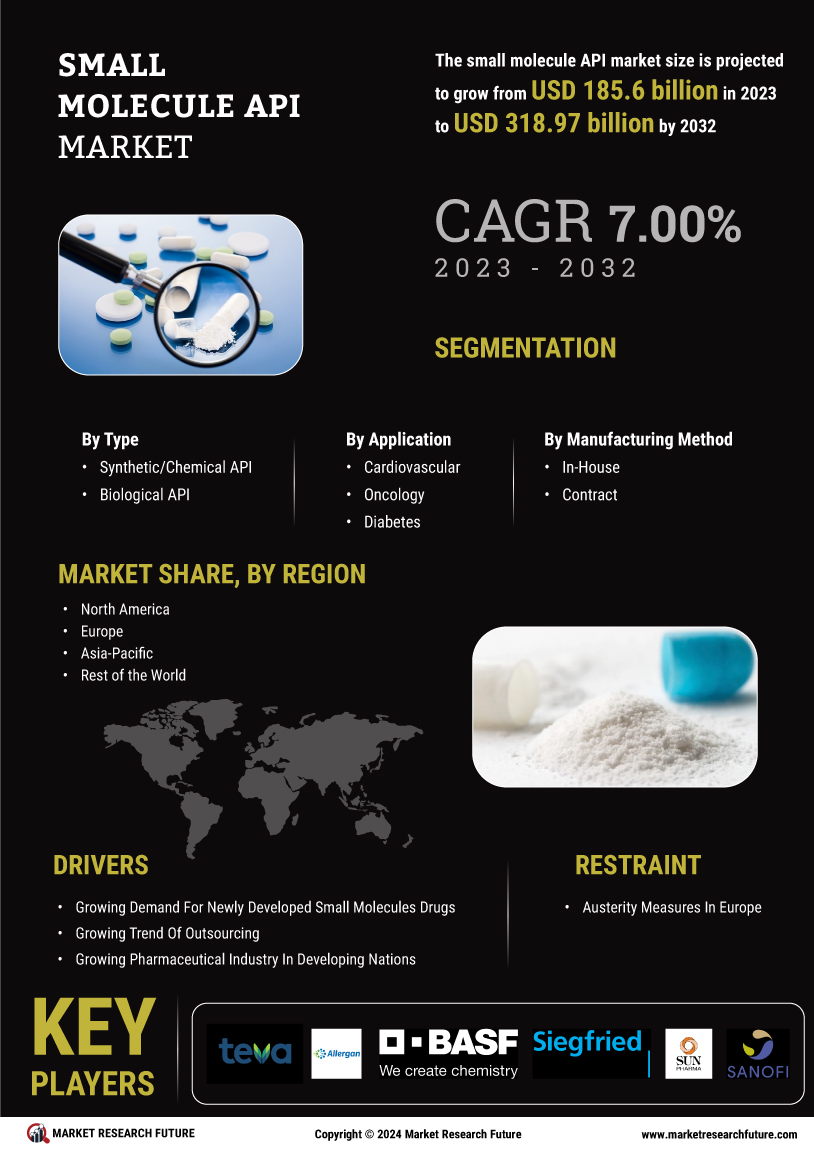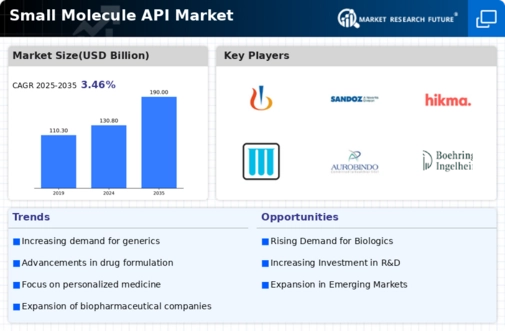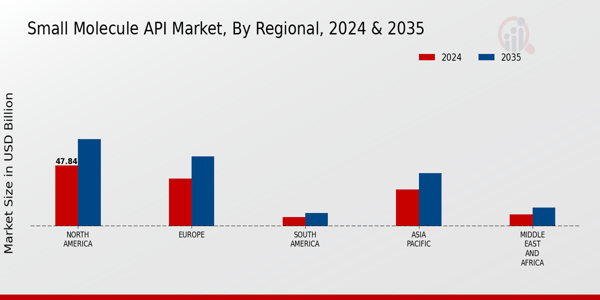Rising Demand for Generic Drugs
The Global Small Molecule API Market Industry experiences a notable increase in demand for generic drugs, driven by the expiration of patents for several blockbuster medications. As patents expire, generic alternatives become available, leading to a surge in the production of small molecule APIs. This trend is particularly evident in regions such as North America and Europe, where healthcare systems emphasize cost-effective treatment options. The market is projected to reach 130.8 USD Billion in 2024, reflecting the growing reliance on generics. This shift not only enhances patient access to essential medications but also stimulates competition among manufacturers, further propelling market growth.
Market Trends and Growth Projections
The Global Small Molecule API Market Industry is characterized by several key trends and growth projections. The market is expected to reach 130.8 USD Billion in 2024, with a steady growth trajectory anticipated through 2035. The compound annual growth rate (CAGR) of 3.46% from 2025 to 2035 indicates a robust expansion phase. Factors such as increasing investments in research and development, the rise of personalized medicine, and the growing emphasis on sustainable manufacturing practices are likely to shape the future landscape of the industry. These trends underscore the dynamic nature of the market and its potential for continued growth.
Emerging Markets and Global Expansion
Emerging markets are becoming increasingly important for the Global Small Molecule API Market Industry. Countries in Asia-Pacific and Latin America exhibit rapid economic growth and a rising middle class, leading to increased healthcare spending. Pharmaceutical companies are expanding their operations in these regions to capitalize on the growing demand for small molecule APIs. This trend is expected to contribute significantly to the market's growth, with projections indicating a rise to 190 USD Billion by 2035. The expansion into these markets not only enhances access to essential medications but also stimulates local economies through job creation and investment.
Regulatory Support for Drug Approvals
Regulatory bodies worldwide are increasingly streamlining the drug approval process, which positively impacts the Global Small Molecule API Market Industry. Initiatives aimed at expediting the review of new drugs, particularly those addressing unmet medical needs, encourage pharmaceutical companies to invest in small molecule APIs. For instance, the FDA's 21st Century Cures Act has facilitated faster approvals for innovative therapies. This supportive regulatory environment not only enhances the market's growth potential but also fosters innovation within the industry. As a result, the market is poised for substantial expansion, driven by the introduction of new small molecule therapeutics.
Increasing Prevalence of Chronic Diseases
The rising prevalence of chronic diseases globally serves as a significant driver for the Global Small Molecule API Market Industry. Conditions such as diabetes, cardiovascular diseases, and cancer necessitate ongoing treatment, leading to a sustained demand for effective pharmaceuticals. Small molecule APIs are particularly well-suited for these applications due to their ability to target specific pathways within the body. As healthcare systems worldwide prioritize the management of chronic conditions, the market is expected to grow at a CAGR of 3.46% from 2025 to 2035. This trend highlights the critical role of small molecule APIs in addressing public health challenges.
Advancements in Drug Development Technologies
Technological advancements in drug development significantly influence the Global Small Molecule API Market Industry. Innovations such as high-throughput screening and computer-aided drug design facilitate the rapid identification and optimization of potential drug candidates. These technologies streamline the development process, reducing time-to-market for new therapeutics. As a result, pharmaceutical companies are increasingly investing in small molecule APIs, which are often more cost-effective to produce compared to biologics. The anticipated growth of the market to 190 USD Billion by 2035 underscores the importance of these advancements in meeting the evolving needs of the healthcare sector.





















